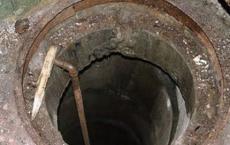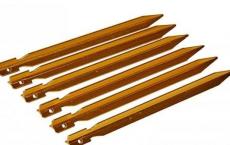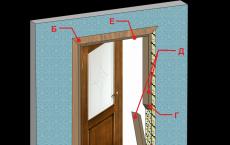Remedies for mold and fungus on the walls in the apartment: the best preparations
The house has a black corner in the bathroom or living room. The fungus spreads by spores, a person, having inhaled them, can not only become seriously ill, but also die. An unpleasant smelling stain peels off the coating of the walls of the room. It is difficult to get rid of such trouble.
Preparations that provide effective disposal of mold:
- Preparations - fungicides need to treat the wall with two to three layers, applying to each other after drying. We choose fungicides depending on which types of fungus need to be eliminated.
- Fungicide "Atlas Mykos" can remove not only mold, but also lichens, mosses and algae.
- Izohan Grzybostop removes contamination from concrete surfaces.
- To kill mold on walls, plaster, paintwork and wood, Spectrum Fungicide will help.
- "Titan Fungicide" can be used when a layer of paint has not been removed from the walls.
- You can permanently remove an infected stain with the help of special paints: fungicidal dispersion, silicone and silicate. Walls must be primed before painting.
Note! It is necessary to fight the fungus carefully, observing elementary safety rules. The use of gloves, goggles and masks will help protect against danger. During processing, the room must be ventilated. After work, you need to burn all the fragments taken from the infected area.
How to remove the fungus on the walls at home?
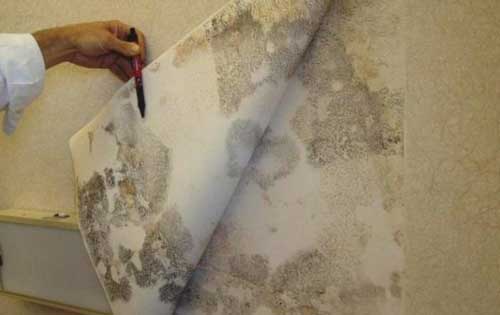
During all stages of work, it is necessary to moisten the entire surface of the stain with water. This will prevent the spraying of harmful spores.
We process not only the stain itself, but also the surface adjacent to it, to remove the mycelium.
| Stages of destruction of the fungus | Steps to destroy an infected stain at home |
| Preparation for work | We stock up on sandpaper, sponge or brush, respirator, spatula, rubber gloves. We check if the ventilation works in the room where we will work. We do this by observing the flame of a burning match near the ventilation duct. |
| Preparing to clean the wall | We check the "clutch" in the affected area - are there any voids between the wall and the plaster by tapping with a hammer. When they are found, we remove the exfoliated plaster. The presence of detached plaster gives a dull sound. |
| Cleaning the affected surface | We work with sandpaper or a brush. In more severe cases of damage, we clean the problem area to a concrete base and prime it with a new layer, adding antiseptic substances. If necessary, use a drill to remove infected areas. |
| We process the problem area | We cover the infected area with a special preparation or a selected remedy, such as domestos. Let's dry well. Repeat up to 3 times in two days. |
| Sushi | We use special equipment to dry the wall or corner. |
Note! If the mold infestation is serious, it is better, for your own safety, to invite specialists to work.
How to deal with the fungus folk remedies?
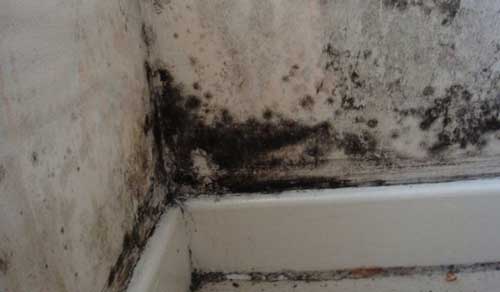
You can remove the fungus on the wall in the apartment with folk remedies:
- We carry out surface treatment with creosote to prevent a new infection.
- A solution of 5 liters of water with the addition of 250 grams of iron and copper sulfate. Or the same solution, but with 500 grams of copper sulfate and 1 liter of vinegar.
- An effective remedy for mold and fungus on the walls is a liquid, for the preparation of which you will need: borax - 450 g, vinegar - 700 ml, boric acid - 200 g, water - 5 l.
Important! The more time the affected area is not treated, the more the stain grows deeper and wider, and the harder it will be to remove it.
To remove a small stain of mold, use:
- Soda solution with a little water.
- Alcohol with the addition of glycerin.
- Soda, which we pre-sprinkle the stain, and then moisten this place with food vinegar.
- Diluted laundry soap.
- Tea tree oil diluted with water.
- A simple solution of copper sulfate.
- Chlorine-containing liquid: furacilin or whiteness.
- Whitening agents for linen.
Note! Applying anti-mildew ammonia to a bleach-treated surface is dangerous due to toxic gases.
Types of fungus and causes
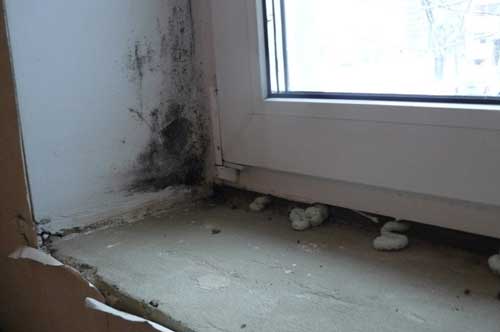
The walls of residential premises are affected by:
- Moldy fungi in the form of point spots of various colors: black, blue, green or brown.
- Blue fungus, settling on wooden surfaces. Microorganisms of this mold quickly spread due to the creation of peculiar channels for them to receive the moisture they need.
- Rot fungi that only live on wood are often referred to as brown, white or bacterial rot. The mold acts on the substance that holds the wood fibers together, destroying it.
- Brownie porcini mushroom, destroying even thick oak boards.
- Black mold, especially dangerous for the health of living organisms, consisting of white mycelium with black spores, black mycelium with white spores, and completely black.
Note! The fungus is dangerous to health, different types to varying degrees. Many of them lead to the appearance of serious diseases.
What causes fungus:
- From damp indoors, especially in the bathroom or basement of the house.
- From the poor condition of sewer and water pipes.
- From freezing walls in winter.
- From a malfunction of the ventilation system.
- From the presence of plastic windows that rarely open for ventilation.
Note! Prevention of mold infection is the ventilation of the premises and the absence of places where moisture accumulates in the house.
Useful video
- Similar posts

